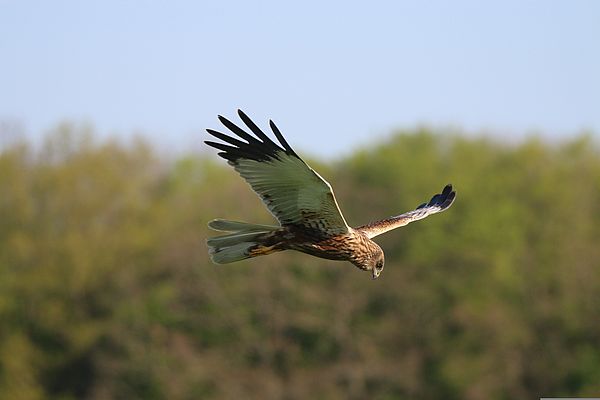Northern Harrier – The Marsh Hawk
Article by Ava Steenstrup
The Northern Harrier, formerly known as the “Marsh Hawk” for one of its favorite habitats, is a bird of prey. Harriers are open country birds that are found in meadows, grasslands, freshwater marshes, saltwater marshes open open fields, and agricultural fields that contain tall grasses and low vegetation.
Adult northern harriers are sexually dimorphic meaning the males and females look different in both plumage and size. The smaller males are slate gray above and white below with contrasting black wingtips and a black trailing edge to the wing.
The larger female harriers are brown above and buff- colored below with brown streaked undersides. The white rump patch at the base of the tail, visible during flight, is distinctive for adults and juveniles of both sexes.
Northern Harriers are not only visual hunters, they also use their sharp hearing to detect prey. Unlike other hawks, they possess an owl-like facial disk or ring of stiff feathers that aids in detecting prey in tall grass or low light conditions by directing sounds towards their ears.
Northern Harriers hunt almost entirely on the wing, foraging for food while flying low over the ground. They are extremely buoyant, quartering back and forth with its wings held in a shallow V-shape, braking and turning with aerobatic agility. Hunting mostly small mammals (especially meadow voles) and small birds (such as sparrows and red-winged blackbirds), they also consume insects (mainly grasshoppers), snakes, frogs, ground squirrels, rabbits, and occasionally ducks. Small birds and larger insects may be grabbed right out of the air.
The male harrier performs a swooping, twirling "sky dance" display to attract a mate during breeding season.
The interested female (seen on the left) will move into the territory and claim a nest site. She builds a platform nest of small twigs, grasses, weeds, water plants, and other vegetation on the ground, with the male also contributing material. Nests are usually located in a habitat that contains an abundant amount of food to feed their young.
A female lays three to six eggs on average, then both parents help incubate the eggs until they hatch in approximately a month. The male harrier brings food to his mate and young during incubation and for the first few weeks after the eggs hatch. After that, the female takes over the food provisioning.
Did you know? Northern Harriers also walk and hop when retrieving prey, collecting nesting material, and retrieving nestlings that have strayed from the nest.

